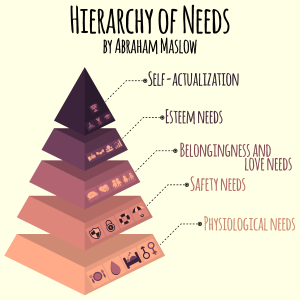Part 1: A Time of Uncertainty with No Shortage of Options
There can be no doubt that the COVID-19 outbreak has been a “transformational event” ushering in monumental change, “restructuring” the very foundations of our business and social landscape.[1] It has brought with it a profound sense of uncertainty across almost all industries; Gaillard warns that currently, “the only certainty is still uncertainty.”[2] ‘Business-as-usual’ is now an ironic term as public life has had to radically alter its practices to handle the crisis in a way almost never seen before in modern times. Adding fuel to the fire, it also has to do this with the full knowledge that these policies will most likely have to be modified and adapted to new information as it emerges.
Therefore, as we enter its third quarter and the grip of the emergency lockdown measures enter a hodgepodge network phase in the United States, to help grapple with this unease have been an avalanche of articles produced outlining the expected ramifications. They have predicted everything from “the end of the office as we know it,” restaurants going completely touchless, an upheaval in architectural design to support social distancing, to calling into question the continued viability of locker rooms or the entertainment of professional sports itself.[3] However, while this time will definitely be “world-reordering,” the most notable markers being discussed are the acceleration of trends already underway. For example, remote working and automation have been growing for years in tech friendly and manufacturing sectors, but are now experiencing an unprecedented exponential level of growth.[4] Similarly, others have noted how the “contactless” trend has been around for a while, mostly under the rubric of ‘seamless’ convenience, but is now taking on a higher priority as a health measure.[5] In fact, the contagion has put all forms of contactless delivery and payments on the fast track.[6] Not only are smart parcel lockers popping up everywhere, but even intelligent vending is getting in on the craze.[7]
For those who also see this as an opportunity, there has been a wave of proposed technological solutions and services as public institutions and private companies scramble to adjust to new safety procedures. The list of products promising to assist with the new norms can feel endless: beyond the various forms of smart lockers, asset control cabinets, and intelligent furniture already mentioned are a host of digital and physical products that could theoretically be part of one’s security package. Currently, antimicrobial coatings and metal alloys are in high demand.[8] The long-term use of UVC lights to sanitize certain healthcare spaces has spurred interest in applications using ‘human-safe’ Far-UVC.[9] Some are hailing the benefits of connected, Internet of Things (IoT) devices for remote data analysis.[10] The learning and the devices themselves can even be controlled through artificial intelligence systems.[11] There are also a myriad of other access control technologies, such as video cameras with facial recognition or fever detection, and each can be layered with many different potential biometric controls included in the mix.[12] On this point, many consider biometrics and mobile credentials to be the holy grails of contactless security going forward.[13]
Unsurprisingly, this situation leaves many feeling overwhelmed with a lot of unanswered questions. How do I wade through this sea of options? What kind of access control system works best for my particular situation? How do I compare one type of technology to the next? Which security service will actually help reduce the risk of COVID-19? How do I know if the price being asked is worth it? What is the best tool if I have a limited budget? Such questions and more often remain lingering in the air as a consumer or purchasing agent attempts to decipher the litany of sales pages, SEO sites masquerading as articles, or highly technical and expert-focused research that will appear in their search engines. However, what most of them fail to do is provide their audience with a way to filter all of that information; an easy to use system for comparing all of these services and technologies that can guide them through the process that can match their particular needs. This paper seeks to do just that by providing a methodology utilizing a psychological theory that most of us are familiar with, Maslow’s Hierarchy of Human Needs.
Continued in part 2
Endnotes
[1] Lasky, Steve. “Security’s Role in Getting Back to Business.” Security Infowatch. May 22, 2020. https://www.securityinfowatch.com/covid-19/article/21139455/securitys-role-in-getting-back-to-business?utm_source=SIW+Weekly+Recap+E-Newsletter&utm_medium=email&utm_campaign=CPS200522044&o_eid=3982I4314767E6H&rdx.ident%5Bpull%5D=omeda%7C3982I4314767E6H&oly_enc_id=3982I4314767E6H (accessed May 27, 2020).
[2] Gaillard, JC. “COVID-19, Cyber Security and the ‘New Normal.’” Corix Partners. April 30, 2020. https://corixpartners.com/covid19-cyber-security-new-normal/ (accessed June 4, 2020).
[3] For the ‘end of the office,’ see: Molla, Rani. “This is the End of the Office as We Know It.” Vox News. April 14, 2020. https://www.vox.com/recode/2020/4/14/21211789/coronavirus-office-space-work-from-home-design-architecture-real-estate (accessed April 17, 2020), Durkin, Patrick. “What the Post Covid-19 Office Will Look Like.” Financial Review. June 4, 2020. https://www.afr.com/work-and-careers/workplace/what-the-post-covid-19-office-will-look-like-20200529-p54xrc (accessed June 4, 2020), Mance, Henry. “The Rise and Fall of the Office.” Financial Times. May 15, 2020. https://www.ft.com/content/f43b8212-950a-11ea-af4b-499244625ac4 (accessed May 27, 2020), and Nixey, Catherine. “Death of the Office.” The Economist. April 29, 2020. https://www.economist.com/1843/2020/04/29/death-of-the-office (accessed July 7, 2020). For the trend of contactless food service, see: Gould Keil, Jennifer. “NYC Restaurant’s Reopening Will Include Changes Like Masks, Food Lockers.” The New York Post. May 17, 2020. https://nypost.com/2020/05/17/nyc-restaurants-will-have-to-pivot-some-sharply-in-reopening/ (accessed May 28, 2020). For COVID’s impact on architecture, see: Bahadursingh, Nathaniel. “8 Ways COVID-19 Will Change Architecture.” Architizer Magazine. May 6, 2020. https://architizer.com/blog/inspiration/industry/covid19-city-design/?utm_source=Architizer&utm_campaign=3d783776f2-EMAIL_CAMPAIGN_2018_11_01_01_02_COPY_01&utm_medium=email&utm_term=0_da3caaef3d-3d783776f2-25065863 (accessed May 27, 2020). For a discussion on the impact on sports, see: Hickey, John. “Can Using Raider’s Locker Room Help Athletics Achieve Social Distancing at Coliseum?” Sports Illustrated. May 17, 2020. https://www.si.com/mlb/athletics/news/can-using-raiders-locker-room-help-athletics-achieve-social-distancing-at-coliseum (accessed May 28, 2020), and Wharton, David. “Coronavirus Makes Locker Rooms Potential Danger Zones.” Los Angeles Times. June 12, 2020. https://www.latimes.com/sports/story/2020-06-12/coronavirus-makes-sports-locker-rooms-danger-zone (accessed June 17, 2020).
[4] Bienvenu, Emma Rose. “7 Predictions for a Post-Coronavirus World.” Marker Medium.com. April 13, 2020. https://marker.medium.com/7-predictions-for-a-post-coronavirus-world-aaac052c8514 (accessed April 17, 2020).
[5] For an example of contactless technology before COVID, see: Corum, Chris. “Northeastern University goes big with contactless lockers.” CR80 News. April 12, 2017. https://www.cr80news.com/news-item/northeastern-university-goes-big-with-contactless-lockers/ (accessed May 27, 2020). For evidence on the rising trend of contactless delivery and access control’s rise, see: Rupprecht, D.A. “The Future of Contactless Delivery.” Robotics and Automation News. May 27, 2020. https://roboticsandautomationnews.com/2020/05/27/the-future-for-contactless-delivery/32517/ (accessed May 27, 2020), and Walton, Chris. “‘Contactless’ Is Retail’s New Must-Have Safe Word, But Executing It Is Easier Said Than Done.” Forbes. May 15, 2020. https://www.forbes.com/sites/christopherwalton/2020/05/15/contactless-is-retails-new-must-have-safe-word-but-knowing-how-best-to-use-it-is-easier-said-than-done/#4c18bf6f4758 (accessed May 27, 2020).
[6] See: Hangzhou Dongcheng Electronic Co., Ltd. “World Post Calling for Using Parcel Lockers During the COVID-19 Pandemic.” Digital Journal. April 12, 2020. http://www.digitaljournal.com/pr/4648769 (accessed May 28, 2020), Jaszczyk, Michael. “The Future of BOPIS After COVID-19.” Multi Channel Merchant. May 27, 2020. https://multichannelmerchant.com/blog/future-bopis-covid-19/?pad.tz.net (accessed June 2, 2020), and McKee, Jordan. “Banks Must Act Fast to Ride the Contactless Payment Tailwinds Created by COVID-19.” Forbes. May 11, 2020. https://www.forbes.com/sites/jordanmckee/2020/05/11/contactless/#7ef6773e22ae (accessed May 28, 2020).
[7] Wiesner, Udi. “Why the Post COVID-19 Era Will Drive Intelligent Vending, Micro Markets and Beyond.” Vending Times. June 1, 2020. https://www.vendingtimes.com/blogs/why-the-post-covid-19-era-will-drive-intelligent-vending-and-micro-market-growth/ (accessed June 3, 2020).
[8] Salto Systems Inc. “SALTO Smart Access Control Has Long Delivered Additional Protection Via BioCote Antimicrobial Technology.” Security Infowatch. April 30, 2020. (accessed May 27, 2020).
[9] See, Buionanno, Manuela, Ponnaiya, Brian, and Welch, David, et. al. “Germicidal Efficacy and Mammalian Skin Safety of 222-nm UV Light.” Radiation Research (2017) 187 (4): 493–501. https://doi.org/10.1667/RR0010CC.1 (accessed May 27, 2020), Cohen, Jon. “Could ultraviolet lamps slow the spread of flu?” Science Magazine. January 3, 2018. https://www.sciencemag.org/news/2018/01/could-ultraviolet-lamps-slow-spread-flu (accessed May 27, 2020), and Welch, D., Buonanno, M., Grilj, V. et al. “Far-UVC light: A new tool to control the spread of airborne-mediated microbial diseases.” Sci Rep 8, 2752 (2018). https://doi.org/10.1038/s41598-018-21058-w (accessed May 27, 2020).
[10] Marshall, Paul. “Staying connected in a crisis: How emerging technology and data can reduce the impact of a pandemic.” Global Banking & Finance Review. April 25, 2020. https://www.globalbankingandfinance.com/staying-connected-in-a-crisis-how-emerging-technology-and-data-can-reduce-the-impact-of-a-pandemic/ (accessed May 6, 2020).
[11] Griffin, Joel. “Is the Security Industry Ready for Autonomous AI?” Security Infowatch. May 29, 2020. https://www.securityinfowatch.com/access-identity/biometrics/facial-recognition-solutions/article/21140234/is-the-security-industry-ready-for-autonomous-ai?utm_source=SIW+Weekly+Recap+E-Newsletter&utm_medium=email&utm_campaign=CPS200529047&o_eid=3982I4314767E6H&rdx.ident%5Bpull%5D=omeda%7C3982I4314767E6H&oly_enc_id=3982I4314767E6H (accessed June 2, 2020).
[12] For a discussion on fever detection, see, Griffin, Joel. “Is the Security Industry Ready for Autonomous AI?” Security Infowatch. May 29, 2020. https://www.securityinfowatch.com/access-identity/biometrics/facial-recognition-solutions/article/21140234/is-the-security-industry-ready-for-autonomous-ai?utm_source=SIW+Weekly+Recap+E-Newsletter&utm_medium=email&utm_campaign=CPS200529047&o_eid=3982I4314767E6H&rdx.ident%5Bpull%5D=omeda%7C3982I4314767E6H&oly_enc_id=3982I4314767E6H (accessed June 2, 2020). For the many possible uses of biometrics in modern smart spaces, see, Orme, David. “Biometric Identity: the Key to Security for Smart Cities.” IT ProPortal. June 8, 2020. https://www.itproportal.com/features/biometric-identity-the-key-to-security-for-smart-cities/ (accessed June 10, 2020). For the importance of layering your security, including using facial recognition and video cameras, see, Lasky, Steve. “Layered Security Solutions Adapted to Battle COVID-19.” Security Infowatch. June 19, 2020. https://www.securityinfowatch.com/perimeter-security/threat-detection-imaging-inspection/article/21142929/layered-security-solutions-adapted-to-battle-covid19?utm_source=SIW+Weekly+Recap+E-Newsletter&utm_medium=email&utm_campaign=CPS200619039&o_eid=3982I4314767E6H&rdx.ident%5Bpull%5D=omeda%7C3982I4314767E6H&oly_enc_id=3982I4314767E6H (accessed June 23, 2020).
[13] For more on biometrics, see: Barnhart, Jeffrey. “Biometrics: The Future of Access Control.” My Tech Decisions. May 14, 2020. https://mytechdecisions.com/physical-security/biometrics-access-control-technology/ (accessed May 28, 2020), and IRIS ID Systems, Inc. “Real Time Networks Integrates Iris ID Solution into Key and Asset Locker Management Systems for Law Enforcement.” Officer.Com. January 23, 2020. https://www.officer.com/command-hq/technology/security-surveillance/lockers-cabinets/press-release/21122608/iris-id-systems-inc-real-time-networks-integrates-iris-id-solution-into-key-and-asset-locker-management-systems-for-law-enforcement (accessed May 28, 2020). For more on mobile credentials, see: Arnold, Shannon. “5 New Uses for Mobile Credential Access Control.” Real Time Networks Blog. October 9, 2019. https://www.realtimenetworks.com/blog/5-new-uses-for-mobile-credential-access-control (accessed May 28, 2020), and Berry, Greg. “5 Ways Mobile Credentials are Changing Access Control.” Security Infowatch. June 30, 2020. https://www.securityinfowatch.com/access-identity/access-control/article/21144366/5-ways-mobile-credentials-are-changing-access-control?utm_source=SIW+Weekly+Recap+E-Newsletter&utm_medium=email&utm_campaign=CPS200702075&o_eid=3982I4314767E6H&rdx.ident%5Bpull%5D=omeda%7C3982I4314767E6H&oly_enc_id=3982I4314767E6H (accessed July 7, 2020).

